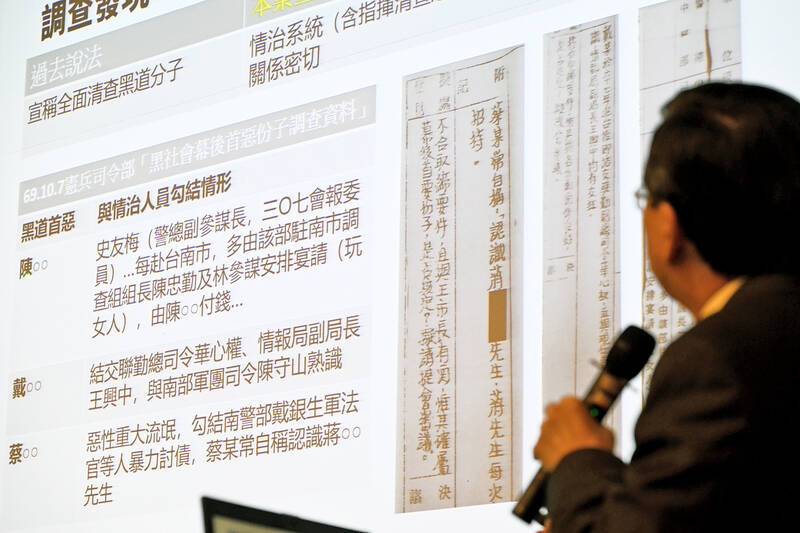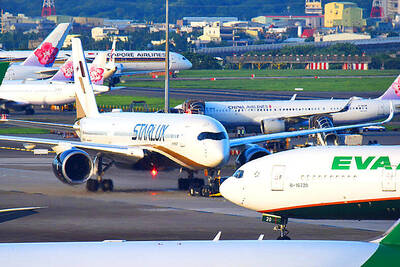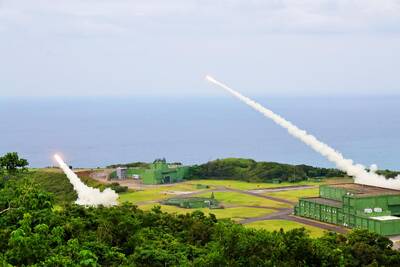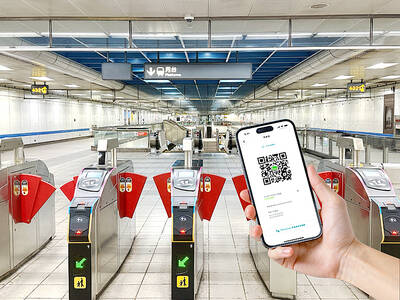The National Security Bureau (NSB) had direct involvement in the 1980 murders of Lin I-hsiung’s (林義雄) 60-year-old mother and two of his daughters — a third survived the stabbing attack — and worked to conceal the evidence, two Control Yuan members said yesterday at a news conference upon completion of their report.
Evidence showed that the NSB and the Taiwan Garrison Command interfered with the case and misled the public in their investigative efforts, Control Yuan members Tsai Chung-yi (蔡崇義) and Fan Sun-lu (范巽綠) said.
Other misconduct noted in the report included manipulating the media by feeding the news media false information, and making false accusations against Lin’s family acquaintances, among them a prominent foreigner, as well as blaming the murders on members of the Dangwai (黨外, “outside the party”) political movement and other democracy activists.

Photo: Tien Yu-hua, Taipei Times
Tsai and Fan said the NSB concealed the identity of the killer and hid evidence of intelligence agencies hiring organized crime groups to conduct contract killings of critics and opponents of the then-Chinese Nationalist Party (KMT) administration.
Tsai and Fan said the bureau should declassify more than 4,000 files and documents relating to politically linked investigations that do not compromise national security, and transfer them to the National Archives.
The Executive Yuan should conduct an internal probe to locate documents and files pertaining to the Lin murders, given that materials related to the case were reportedly passed to the Executive Yuan for storage in 1992 when the Taiwan Garrison Command was decommissioned to become the Coast Guard Administration, Tsai and Fan said.
Lin was a lawyer and elected as councilor for the then-Taiwan Provincial Assembly, and was prominent in the opposition movement. Lin’s home had already been placed under 24-hour surveillance and his family telephone wiretapped, as the office of the "Dangwai" monthly journal Formosa Magazine at the time was located on the upper story of his residence.
On Feb. 28, 1980, while Lin was jailed and awaiting trial for his participation in the Formosa Incident, also known as the Kaohsiung Incident, the year before, an unknown person entered his house and stabbed Lin’s mother and his three daughters. His eldest daughter, then nine years old, survived.
The murders were a shock to the democracy movement. Most in the movement believed that the murders were conducted by state police and intelligence agencies to crush the movement and silence dissent.
“It is now 43 years since the Lin murders occurred, but the killer has not been identified. Although this probe and other efforts uncovered materials and evidence, there is evidence that this was state violence carried out by intelligence agencies,” Fan said.
Along with the NSB and Taiwan Garrison Command, other agencies investigating the case at the time were the Investigation Bureau, the Military police and units of the National Police Agency, Fan said.
In re-examining task force meeting records, it was found that all five agencies colluded to conceal evidence and plant false information into the media, Fan said.
“Investigating officers at these meetings cleared the military, police and intelligence agencies of involvement. They misled the media to say that the killings were perpetrated by other democracy activists as revenge for Lin’s reported cooperation with the authorities after he was arrested,” Tsai said.
The report said that the task force later claimed the murders were orchestrated by the US to destabilize Taiwanese society, citing apparent wiretaps of phone calls by Lin’s friend J. Bruce Jacobs, a US-born Australian academic who specialized in Taiwan studies.
Jacobs was detained for three months, falsely accused of the murders on account of quotes attributed to Lin’s surviving daughter about seeing a foreigner at the house. She denied making such a report.
Tsai said the files showed many false leads on the revenge theory.
Taiwanese democracy activists accused at the time included now-Legislative Speaker You Si-kun (游錫?), as well as Lin’s family friends. You and others were summoned for interrogation over the murders more than 10 times.
“In the secret report presented by the NSB to then-president Chiang Ching-kuo (蔣經國) dated April 8, 1980, some task force officers said they believe the killer came from a hawkish faction in the Republic of China military to carry out the murders of Lin’s family. They were hoping to instill fear and silence KMT dissidents and opposition,” Tsai said.
Multiple probes of the case had been carried out by the Control Yuan and prosecutors in 1996, 1998, 2007 and 2009, but a renewed look was requested after additional NSB files were uncovered by the Transitional Justice Commission in 2020.

Trips for more than 100,000 international and domestic air travelers could be disrupted as China launches a military exercise around Taiwan today, Taiwan’s Civil Aviation Administration (CAA) said yesterday. The exercise could affect nearly 900 flights scheduled to enter the Taipei Flight Information Region (FIR) during the exercise window, it added. A notice issued by the Chinese Civil Aviation Administration showed there would be seven temporary zones around the Taiwan Strait which would be used for live-fire exercises, lasting from 8am to 6pm today. All aircraft are prohibited from entering during exercise, it says. Taipei FIR has 14 international air routes and

Taiwan lacks effective and cost-efficient armaments to intercept rockets, making the planned “T-Dome” interception system necessary, two experts said on Tuesday. The concerns were raised after China’s military fired two waves of rockets during live-fire drills around Taiwan on Tuesday, part of two-day exercises code-named “Justice Mission 2025.” The first wave involved 17 rockets launched at 9am from Pingtan in China’s Fujian Province, according to Lieutenant General Hsieh Jih-sheng (謝日升) of the Office of the Deputy Chief of the General Staff for Intelligence at the Ministry of National Defense. Those rockets landed 70 nautical miles (129.6km) northeast of Keelung without flying over Taiwan,

City buses in Taipei and New Taipei City, as well as the Taipei MRT, would on Saturday begin accepting QR code payments from five electronic payment providers, the Taipei Department of Transportation said yesterday. The new option would allow passengers to use the “transportation QR code” feature from EasyWallet, iPass Money, iCash Pay, Jkopay or PXPay Plus. Passengers should open their preferred electronic payment app, select the “transportation code” — not the regular payment code — unlock it, and scan the code at ticket readers or gates, General Planning Division Director-General Liu Kuo-chu (劉國著) said. People should move through the

The Ministry of National Defense (MND) today released images of the military tracking China’s People's Liberation Army (PLA) movements during the latest round of Chinese drills around Taiwan. The PLA began "Justice Mission 2025" drills today, carrying out live-fire drills, simulated strikes on land and maritime targets, and exercises to blockade the nation's main ports. The exercises are to continue tomorrow, with the PLA announcing sea and air space restrictions for five zones around Taiwan for 10 hours starting from 8:30am. The ministry today released images showing a Chinese J-16 fighter jet tracked by a F-16V Block 20 jet and the